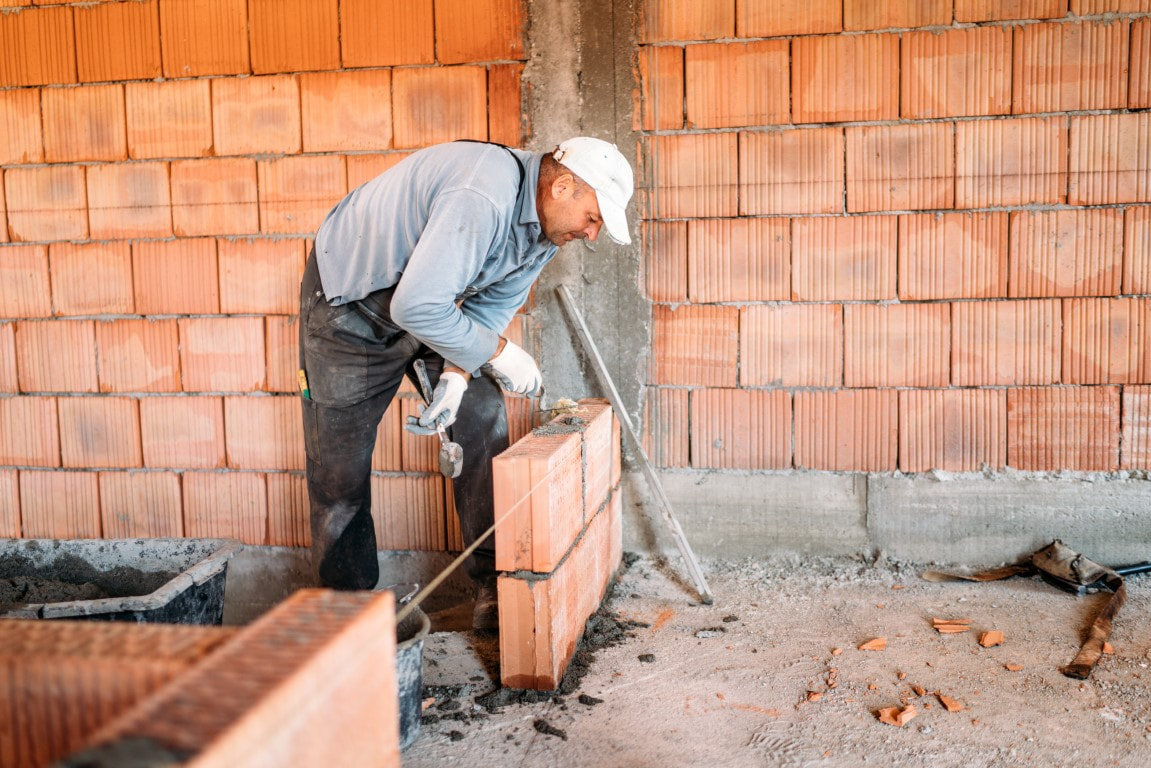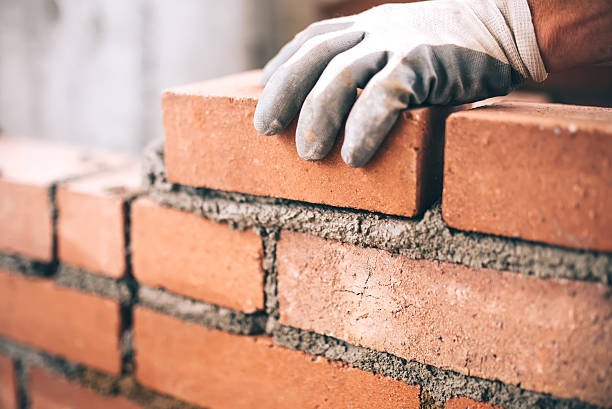Opening the Tricks of Sustainable Stonework Building And Construction Practices for Eco-Friendly Buildings
Amongst the myriad approaches to environment-friendly structure, lasting masonry building and construction stands out as a time-tested and resilient technique that holds a riches of untapped possibility. From the selection of materials to ingenious construction methods, the tricks to accomplishing sustainability within masonry building are diverse and appealing.
Advantages of Lasting Masonry Building
Embracing lasting stonework building and construction practices not just minimizes environmental influence yet additionally provides long-term economic benefits to contractors and communities. By making use of materials like recycled bricks, blocks, and rocks, building contractors can substantially reduce the carbon footprint of their tasks while advertising resource performance. Furthermore, lasting stonework construction strategies, such as appropriate insulation and thermal mass buildings, can enhance energy performance within buildings, causing minimized operational expenses over time.
Additionally, the durability and durability of stonework structures add to long-lasting financial benefits. Structures created utilizing lasting masonry techniques typically call for less maintenance and repair work, equating to set you back savings for home builders and homeowner. The long life of masonry materials additionally makes certain that structures remain steady and protected, decreasing the requirement for constant improvements or replacements.
Eco-Friendly Masonry Materials
Using environment-friendly masonry products is a pivotal step towards enhancing the sustainability of building and construction techniques and minimizing ecological influence while making the most of lasting economic advantages. Sustainable masonry products are sourced, generated, and utilized in a manner that lowers total ecological impact. Materials such as recycled bricks, recovered rock, and lasting concrete blocks are coming to be increasingly preferred options for eco-conscious builders. Recycled blocks, as an example, not only draw away waste from garbage dumps but additionally call for much less energy to produce contrasted to brand-new blocks. Reclaimed rock provides an one-of-a-kind visual appeal while reducing the requirement for new quarrying. Sustainable concrete blocks integrate recycled accumulations and may include enhanced insulation properties, contributing to energy effectiveness in buildings.
Furthermore, natural materials like adobe, rammed earth, and straw bales provide outstanding thermal mass residential or commercial properties, decreasing the demand for home heating and cooling energy. These materials are frequently locally available, advertising local economic climates and decreasing transportation-related carbon exhausts. By selecting eco-friendly stonework materials, building jobs can considerably lower their ecological impact and add to the creation of much healthier, much more sustainable constructed atmospheres.
Energy-Efficient Stonework Techniques
Energy effectiveness plays an important role in boosting the sustainability of stonework construction techniques. By carrying out energy-efficient masonry methods, building contractors can considerably minimize the total energy consumption of a structure, resulting in lower operational costs and a smaller ecological impact. One key energy-efficient stonework strategy is using thermal mass, which entails integrating dense products like concrete or block into the building's framework to soak up and keep heat. This aids manage interior temperatures, decreasing the need for mechanical heating and cooling down systems.

Technologies in Sustainable Stonework
Recent advancements in sustainable stonework techniques have actually produced cutting-edge methods that are reshaping the building and construction market. One such technology is the growth of self-healing concrete, which utilizes germs installed within the concrete to recover fractures autonomously. This development not just minimizes upkeep prices yet also enhances the resilience of stonework structures, adding to their sustainability.
One more significant advancement is using recycled accumulations in stonework building and construction - masonry contractor. By integrating products such as smashed ceramic waste or recycled glass into concrete blends, builders can decrease the environmental influence of building tasks while keeping structural Website stability. This method not just diverts waste from land fills but also preserves natural deposits, making it an essential improvement in lasting masonry building
Furthermore, the assimilation of electronic design tools, such as Building Info Modeling (BIM), is reinventing the method stonework structures are prepared and constructed. BIM enables more precise computations, decreased material waste, and boosted energy effectiveness, eventually resulting in even more lasting structure techniques. These developments collectively indicate a promising future for lasting stonework building in the period of environment-friendly structures.
Future Trends in Stonework Sustainability
With the cutting-edge strides made in lasting stonework methods, the future patterns in masonry sustainability are positioned to additional reinvent the building and construction industry. One of the key trends forming the future of stonework sustainability is the increased assimilation of innovation. Advancements such as Structure Information Modeling (BIM) and digital reality simulations are being made use of to enhance masonry building and construction procedures, leading to decreased material waste and enhanced power effectiveness in structures.
Furthermore, click to read more the development of novel sustainable materials is readied to play a substantial role in boosting the eco-friendliness of stonework construction. masonry contractor. Developments like self-healing concrete, recycled accumulations, and bio-based binders are getting grip for their capability to minimize ecological influence while preserving architectural honesty

Conclusion
To conclude, sustainable masonry construction techniques provide many benefits for eco-friendly buildings. By making use of environment-friendly materials and energy-efficient methods, masonry can add to a more lasting developed setting. Innovations in lasting masonry are continuously being created to further boost the environmental performance of structures. Looking towards the future, the fad of masonry sustainability is anticipated to grow, resulting in more environmentally pleasant and energy-efficient building techniques in the years to find.